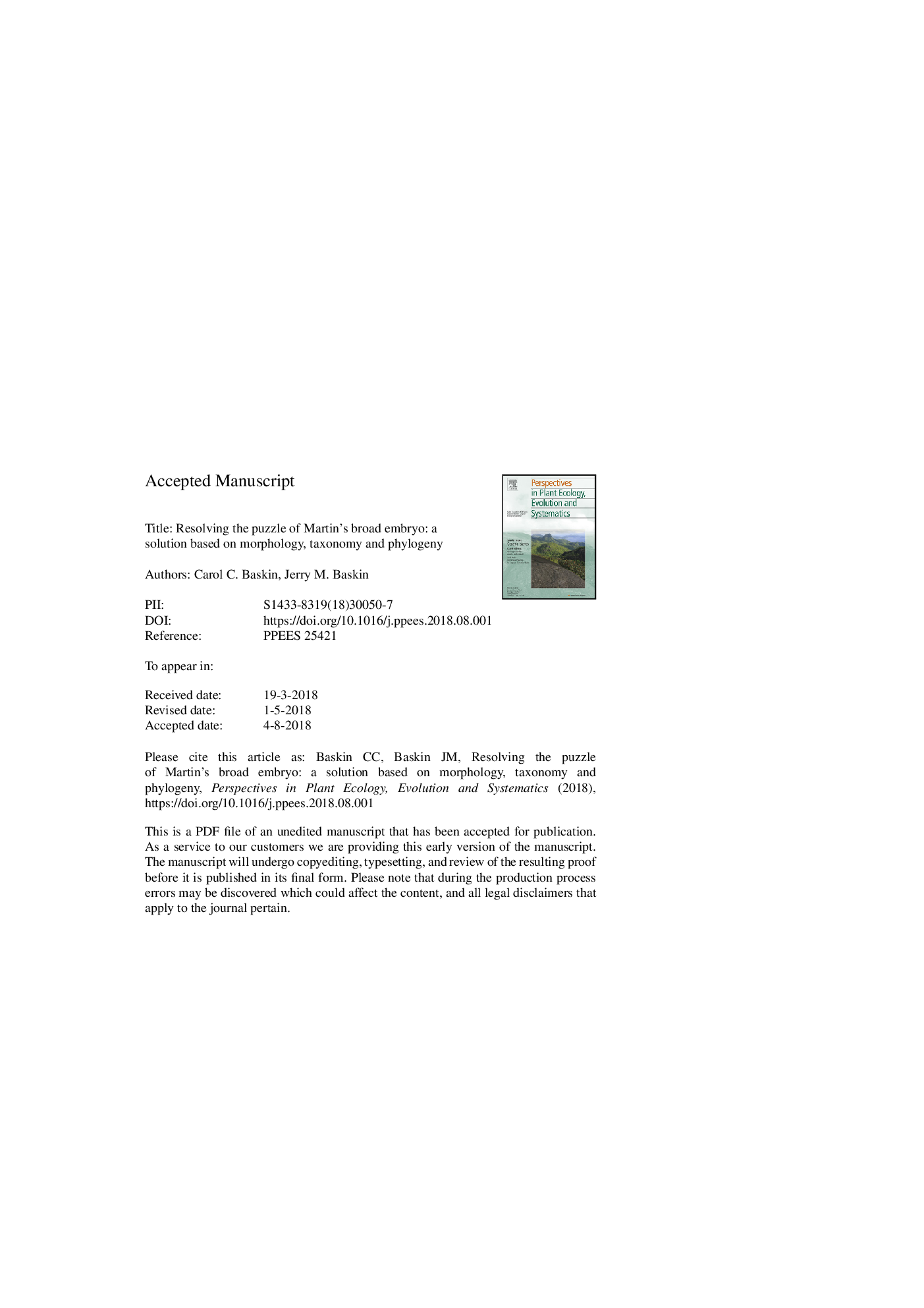| کد مقاله | کد نشریه | سال انتشار | مقاله انگلیسی | نسخه تمام متن |
|---|---|---|---|---|
| 8849475 | 1618586 | 2018 | 36 صفحه PDF | دانلود رایگان |
عنوان انگلیسی مقاله ISI
Resolving the puzzle of Martin's broad embryo: A solution based on morphology, taxonomy and phylogeny
ترجمه فارسی عنوان
حل پازل جنین گسترده مارتین: راه حل مبتنی بر مورفولوژی، طبقه بندی و فیزیولوژی
دانلود مقاله + سفارش ترجمه
دانلود مقاله ISI انگلیسی
رایگان برای ایرانیان
کلمات کلیدی
موضوعات مرتبط
علوم زیستی و بیوفناوری
علوم کشاورزی و بیولوژیک
بوم شناسی، تکامل، رفتار و سامانه شناسی
چکیده انگلیسی
In his classic work on seeds published in 1946, Martin described the broad embryo as being wider than tall and listed it as occurring in four monocot and two dicot families and in genera of Cyperaceae and Commelinaceae. However, a preliminary survey of his “broad embryo” revealed a diversity of embryo shapes and structures. Our hypothesis that Martin defined a broad embryo solely on its outline/silhouette was supported by results of a detailed review of embryo and seed germination morphological characteristics of each family and genus he listed. We also included Piperaceae and Hydatellaceae since their embryos closely resemble those in the Saururaceae and Eriocaulaceae/Maycaceae/Xyridaceae, respectively. The various taxa can be subdivided into categories based on (1) presence or absence of organs in embryos of freshly-matured seeds, (2) undifferentiated embryo differentiates organs inside the seed vs. outside the seed and (3) food is stored in starchy endosperm vs. scant endosperm and copious starchy perisperm. The embryo in seeds of Eriocaulaceae/Maycaceae/Xyridaceae, other Poales with undifferentiated embryos and Hydatellaceae is wider than tall. This group of taxa has a lens- or bell-shaped undifferentiated embryo, leaves and roots are differentiated after the embryo is pushed/carried outside the seed and copious starchy endosperm is present, except in Hydatellaceae, which has starchy perisperm; this is the true “broad embryo”. The embryo in seeds of Saururaceae and Piperaceae is rudimentary (or pre-rudimentary) as described by Martin, that in Juncaceae, Cyperaceae and Commelinaceae a variation of the capitate embryo and the cup-like embryo in Nymphaeaceae and Cabomaceae is not known in other plant families and is therefore designated as the “cupulate embryo.”
ناشر
Database: Elsevier - ScienceDirect (ساینس دایرکت)
Journal: Perspectives in Plant Ecology, Evolution and Systematics - Volume 34, October 2018, Pages 61-67
Journal: Perspectives in Plant Ecology, Evolution and Systematics - Volume 34, October 2018, Pages 61-67
نویسندگان
Carol C. Baskin, Jerry M. Baskin,
